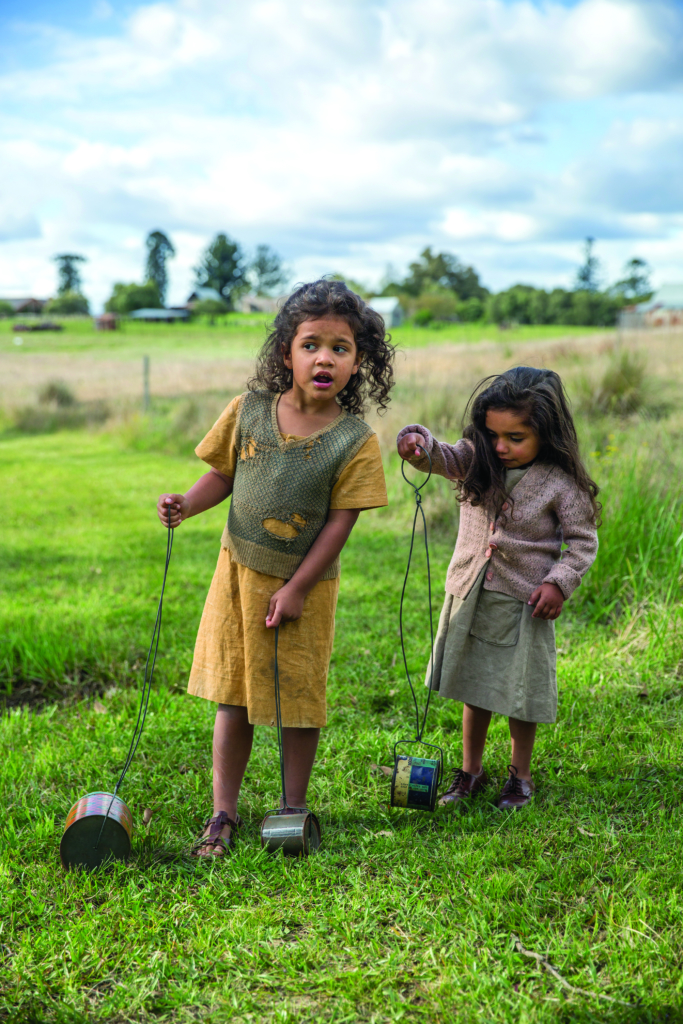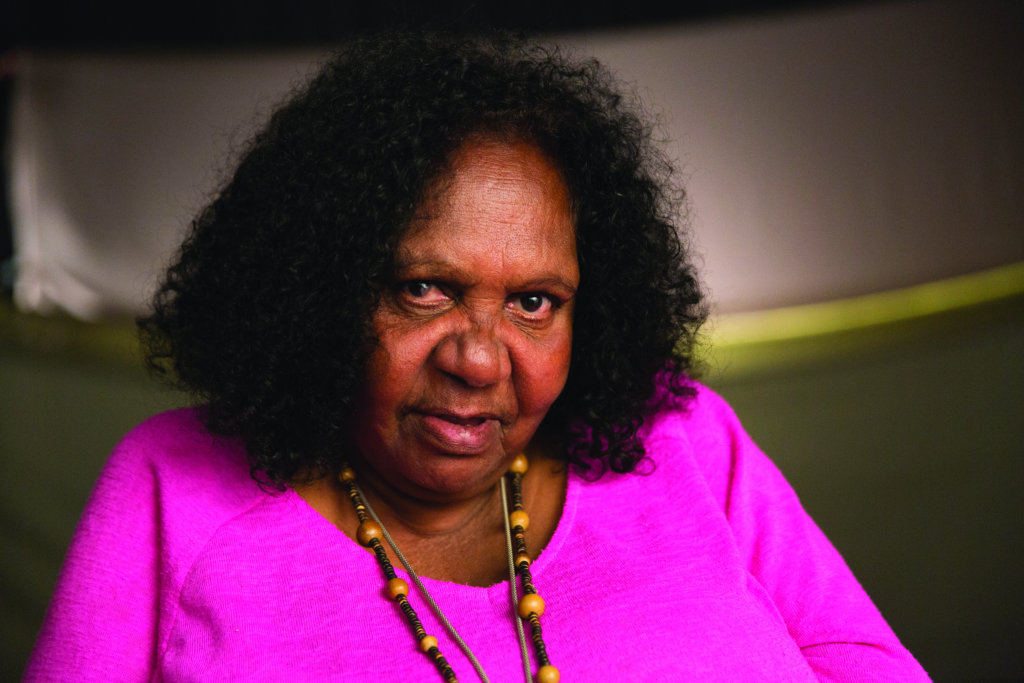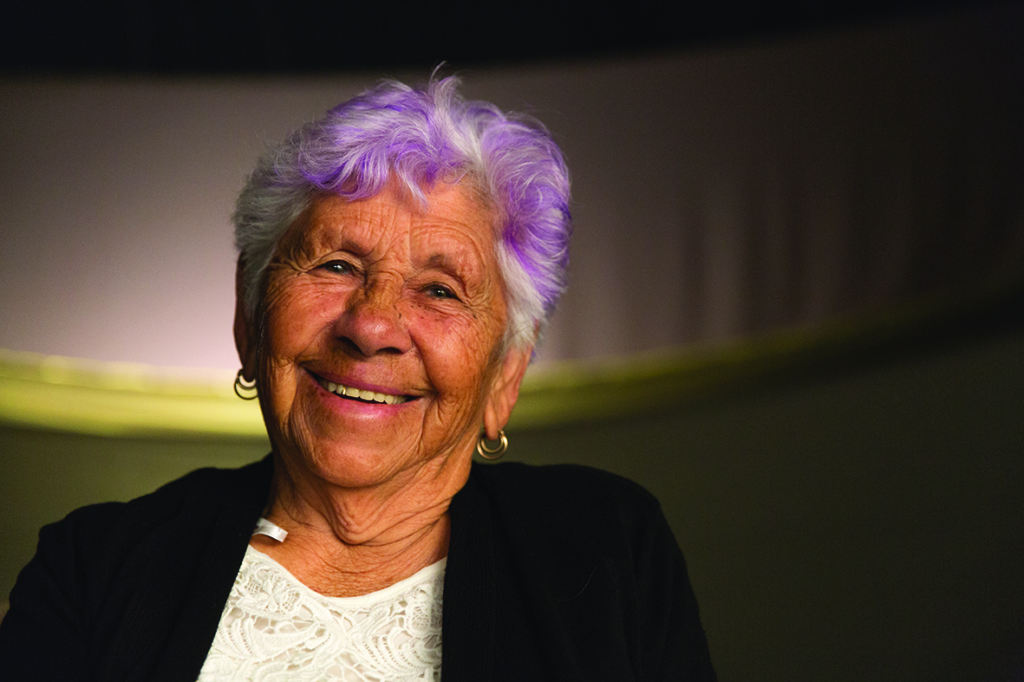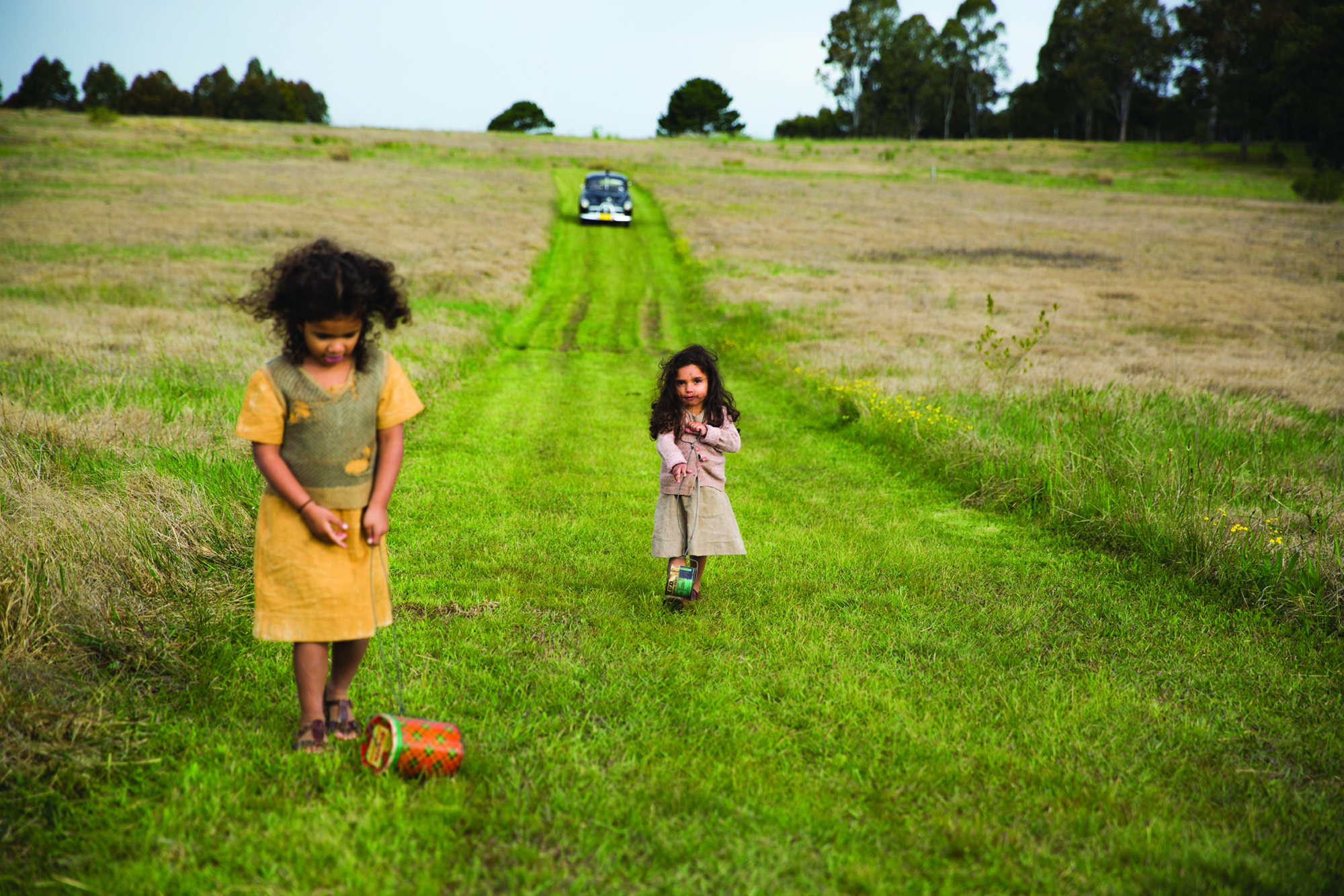‘There is probably a short answer to what you call someone […] especially a child, who is getting no wages or is severely underpaid,’ says Larissa Behrendt, director of research at University of Technology Sydney’s Jumbunna Indigenous House of Learning, in Servant or Slave (Steven McGregor, 2016).
The United Nations human rights standards would say that is slavery. People will say, ‘That’s what happened in the southern states of America and we didn’t have that here.’ But, for the child who was working for nothing in someone else’s kitchen with no other choice, cannot escape, is beaten when they do not do their work, is abused in other ways, it’s slavery.
Although the former legalisation of slavery in the US is common knowledge, Australia’s parallel history is rarely discussed. However, McGregor’s moving documentary brings it to light. He captures the stories of five Aboriginal women who, as children, were forcibly taken from their parents and turned into domestic slaves. Ostensibly employed as servants, they worked without rights or wages, in fear of psychological, physical and sexual abuse. Their experiences represent those of thousands upon thousands: Servant or Slave demonstrates that enslavement in Australia was not an occasional occurrence, exercised by individuals, but a widespread phenomenon, enabled and underpinned by legislation.

The women are Rita Wright, Violet West, and sisters Valerie Linow, Adelaide Wenberg and Rita Wenberg. All five were sent – for various lengths of time – to the Cootamundra Domestic Training Home for Aboriginal Girls, which was open from 1911 until the late 1960s. McGregor conveys their stories through a combination of intimate interviews, archival footage and beautifully shot re-enactments. Providing context is an intermittent narrative spoken by Hetti Perkins, who is also the film’s co-producer and co-writer, which takes the form of a chronological outline of government policies affecting Aboriginal and Torres Strait Islander Australians – from the Aboriginals Protection and Restriction of the Sale of Opium Act 1897 to the Racial Discrimination Act 1975.
‘The intention was to present the film as a poem,’ McGregor says, in an interview for SBS Radio’s Living Black program.[1]Steven McGregor interview with Kirstyn Lindsay for Living Black, SBS Radio, available at Melissa Compagnoni, ‘Servant or Slave: Reshaping Australian History Through a New Lens’, SBS website, 9 December 2016, <http://www.sbs.com.au/yourlanguage/aboriginal/en/article/2016/11/23/servant-or-slave-reshaping-australian-history-through-new-lens>, accessed 18 May 2017. If Servant or Slave is a poem, then its opening scenes function as a powerful apostrophe, urging the viewer to listen – and bear witness. The women take turns staring unflinchingly at the camera, their faces shot in close-up and at eye level, as fragments of their interviews are heard as voiceovers. Adelaide Wenberg says, ‘I was originally born in Grafton, taken from Grafton to [the] Cootamundra girls home when I was four. I don’t know why. It’s not clear to me,’ while her sister Rita recalls, ‘I was three-and-a-half years old. Being so young, as I was, I thought: oh well, this is natural to be abused. You know, thrown in a box room and whipped and things like that.’
Servant or Slave demonstrates that enslavement in Australia was not an occasional occurrence, exercised by individuals, but a widespread phenomenon, enabled and underpinned by legislation.
In addition, Wright’s statements demonstrate that the women’s experiences are not only relevant historically – they continue to impact the present. ‘We were like dogs,’ she says. ‘Just given rubbish, you know. Had the leftovers. Hurts to think of what we had done to us. Pain that we went through. I still have nightmares.’
‘Some people say that was then and this is now, so get over it,’ McGregor told The Guardian’s Luke Buckmaster last year. ‘But these things are living with these women everyday [sic]. It affects them today. It affects their children and it affects their grandchildren.’[2]Steven McGregor, quoted in Luke Buckmaster, ‘Women of the Stolen Generations: “I Want My Story Out”’, The Guardian, 28 November 2016, <https://www.theguardian.com/film/2016/nov/28/women-of-the-stolen-generations-i-want-my-story-out>, accessed 18 May 2017.
The women’s poignant testimonies are accompanied by a stirring rendition of ‘Down in the River to Pray’. Although the origins of this song are contested, the earliest known published version appears in Slave Songs of the United States, a collection of 136 African-American spirituals that was originally published in 1867. The song subtly links the Aboriginal women’s stories with slavery elsewhere in the world through association rather than didacticism. In addition, the fact that the recording features Indigenous Australian musicians, led by Emma Donovan, strengthens the song’s ties to their culture.
‘I hope this film starts a conversation that Australia was also entrenched in the slave trade and that it didn’t [only] happen in other parts of the world, but right here,’ McGregor has asserted.[3]McGregor interview with Lindsay, op. cit.

Indeed, from the outset, Perkins’ narration makes it clear that the women’s deprivation of rights were not anomalies, but written into Australian law. ‘In 1901, Australia became a federation,’ she narrates. ‘Under the new constitution, Aboriginal people would not be counted in the census, and the Commonwealth would have the power to make laws relating to any race of people in Australia, except Aboriginal people.’ She continues:
The federated states retained exclusive power over Aboriginal affairs until 1967 […] Aboriginal people had been subject to oppressive legislation that varied on a state-by-state basis from the late nineteenth century. The notorious Aborigines Protection Board had the power to forcibly move people from their traditional lands onto reserves and missions and to remove children from their families, and power over their financial affairs. The policy of protection – of smoothing the dying pillow of a doomed race – rapidly changed to one of control, with the endgame of assimilation.
Lending credence to these statements is a series of black-and-white archival photographs and footage showing Aboriginal people on various reserves and missions. The images are without captions, which maximises their emotional impact. As viewers, we confront each of these with only our raw responses and imaginations to guide us, without the distraction or mediation of explanatory text. In many cases, the subjects are staring straight at the camera, demanding, again, that we bear witness. One particularly distressing photograph captures numerous adults and children standing in rows, doubled over, overlooked by a woman in a formal white dress. The sense of subjugation is overwhelming. Another image shows schoolchildren with shaved heads, in uniforms, accepting rations.
Skyring argues that the ‘incredible rate’ at which Aboriginal girls were taken from their families was ‘partly fuelled by the insatiable desire for cheap domestic servants … I don’t think you can actually separate the Stolen Generations story from the “stolen wages” story. They’re completely entwined.’
While this historical and political background is crucial to building the film’s case, the women’s stories are at its core. ‘It was a tricky balance to not overwhelm the emotion of the story with political overtones,’ says McGregor; he then describes the five women as ‘the heart of the film’.
They provided the emotion, the courage and the truth. We continually came back to those three points during the edit. We knew we had to paint the bigger political picture of the government policy and legislation, but not to the detriment where it […] overwhelmed the ladies’ voices.[4]Steven McGregor, quoted in ‘Interview with Steven McGregor: Servant or Slave’, Screen NSW website, <http://screen.nsw.gov.au/news/interview-with-steven-mcgregor-servant-or-slave?enews=242>, accessed 18 May 2017.
The film adds immediacy to these voices through stunning re-enactments. In one scene, the camera cuts from an interview with Behrendt to a light-filled landscape, panning through paddocks dotted with gum trees and meadows overflowing with wild flowers while a lilting, wordless melody plays. Then, a three-year-old child’s smiling face fills the screen. For a moment, the viewer is lulled into sensations of freedom, beauty and communion with nature. However, this is swiftly undermined by the appearance of a government car, which comes into sight from behind the crest of a hill, its menace emphasised by a low-angle shot. Wright, in voiceover, recounts:
We was playing outside in the dirt with our roly-poly and then, while Mum and all the other ladies were playing cards inside, a black car come there, just parked there. [My sister] Jenny, she had me by the hand and hanged onto me. The fella just picked us up and took us and Mum didn’t know.

Her straightforward sentences are chilling for their lack of adornment and the absence of artistry. She does not convey an intense emotional reaction or offer judgement; she simply states the facts. And the facts are enough. The re-enactment is similarly restrained – the scene ends with a long shot from the children’s point of view as they turn to see the car approaching them. The film does not depict the act of theft, compelling viewers to envision it. Behrendt provides context, stating, ‘There were lots of instances where Aboriginal women would go into hospital, would be told their children had died, and then later find out that they’d been adopted out.’
However, not all moments in the documentary are as understated. Beyond chronicling the severing of children from parents, Servant or Slave travels to the missions and homes where the women lived, exploring the total control exerted over their lives and its effects on their personal and emotional development. One of the film’s most harrowing moments is Linow’s account of being raped and beaten with fencing wire by a property owner who, on arriving home at the end of a working day, accused her of not cleaning the kids’ room. The camera cuts between close-ups of her distressed, tearful face and a re-enactment, shot in a shadowy house; we feel as though we are looking onto a forbidden scene, taking on Linow’s fear as well as the denial and secrecy that have shrouded such incidents from public knowledge.
Simultaneously, McGregor pieces together the roles of missions and homes in perpetuating slavery. Archival photos show Wright as a little girl on a farm, with Perkins revealing that these images show Marella Mission, also known as the Hidden Mission, a privately owned farm in Sydney’s north-west where the ‘hundreds of children who passed through [its] gates became an unpaid labour force that supported the farm, which already benefited from government funding and public donations’. Wright then recalls stealing oranges because she was so hungry and copping ‘hidings over tiny little things’. Having arrived at Marella from Cootamundra at the age of two and left at nineteen, she effectively spent her childhood in slavery. Here, the film powerfully harks back to the definition of ‘slave’ displayed during its opening credits: ‘Slave (Noun): A person who is forced to work for another against their will.’

Perkins stresses how widespread this form of slavery was in Australia:
under the guise of protecting Aboriginal people from physical and financial exploitation by their employers […] legislation allowed the state government to assume complete control over Aboriginal people’s lives, including the power to control their welfare entitlements and wages.
Archival footage then shows Aboriginal people partaking in manual labour, such as farming and sewing. The expert opinion of Ros Kidd, a historian, strengthens this thesis, as she explains that Aboriginal workers had ‘no idea of how much the government was selling [their] labour for’ and that employers could keep up to 80 per cent of an employee’s wage, falsely claiming the money had been spent on the worker. Meanwhile, Fiona Skyring, another historian, points out that, up until the 1960s, on many stations in the Kimberley, Aboriginals were not paid at all and worked for basic rations such as meat, sugar, tea and tobacco. In addition, Skyring argues that the ‘incredible rate’ at which Aboriginal girls were taken from their families was ‘partly fuelled by the insatiable desire for cheap domestic servants […] I don’t think you can actually separate the Stolen Generations story from the “stolen wages” story. They’re completely entwined.’
Servant or Slave is both a moving portrait of five women who are ready to tell their stories, and an indictment of the Stolen Generations and institutionalised slavery in Australia. Through the film’s revealing interviews, magnificent reenactments, archival material and well-told narrative, McGregor compels the viewer to bear witness to a national history that is far from over, and continues to affect its participants and subsequent generations. The documentary’s power lies, not in didacticism or overt politicisation, but in the bravery and honesty of its subjects and in McGregor’s masterful interweaving of the private with the public.
http://www.servantorslave.com
https://clickv.ie/w/metro/servant-or-slave
Endnotes
| 1 | Steven McGregor interview with Kirstyn Lindsay for Living Black, SBS Radio, available at Melissa Compagnoni, ‘Servant or Slave: Reshaping Australian History Through a New Lens’, SBS website, 9 December 2016, <http://www.sbs.com.au/yourlanguage/aboriginal/en/article/2016/11/23/servant-or-slave-reshaping-australian-history-through-new-lens>, accessed 18 May 2017. |
|---|---|
| 2 | Steven McGregor, quoted in Luke Buckmaster, ‘Women of the Stolen Generations: “I Want My Story Out”’, The Guardian, 28 November 2016, <https://www.theguardian.com/film/2016/nov/28/women-of-the-stolen-generations-i-want-my-story-out>, accessed 18 May 2017. |
| 3 | McGregor interview with Lindsay, op. cit. |
| 4 | Steven McGregor, quoted in ‘Interview with Steven McGregor: Servant or Slave’, Screen NSW website, <http://screen.nsw.gov.au/news/interview-with-steven-mcgregor-servant-or-slave?enews=242>, accessed 18 May 2017. |





